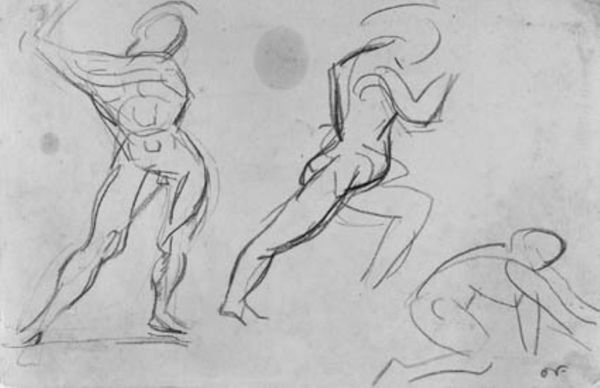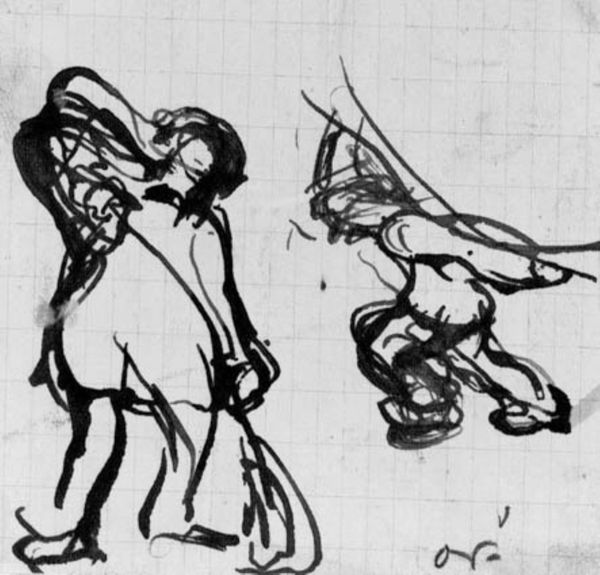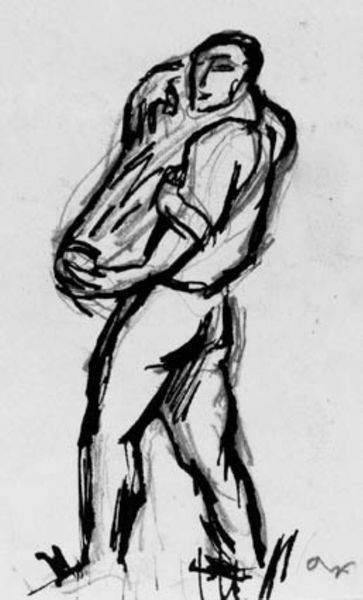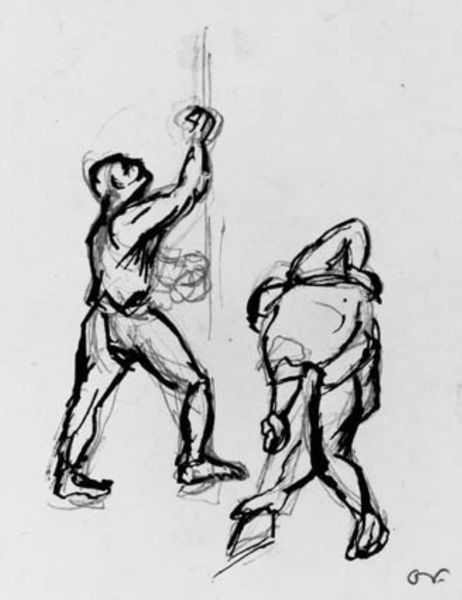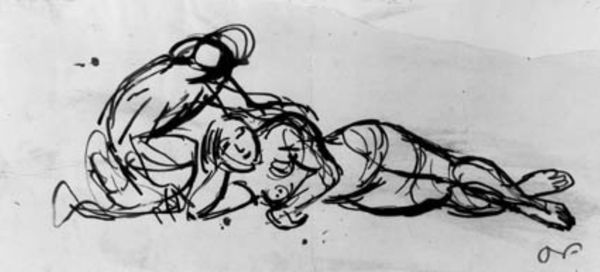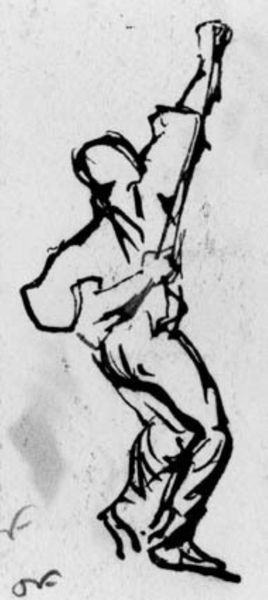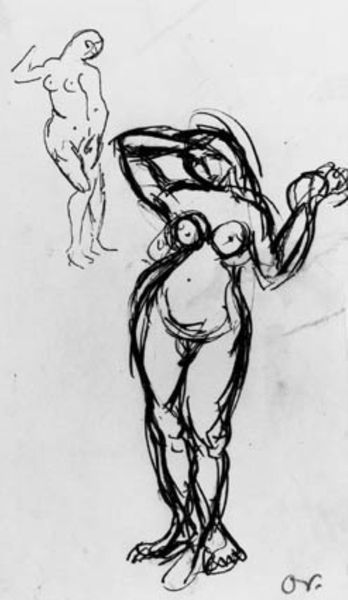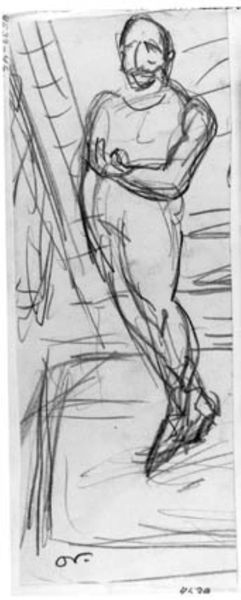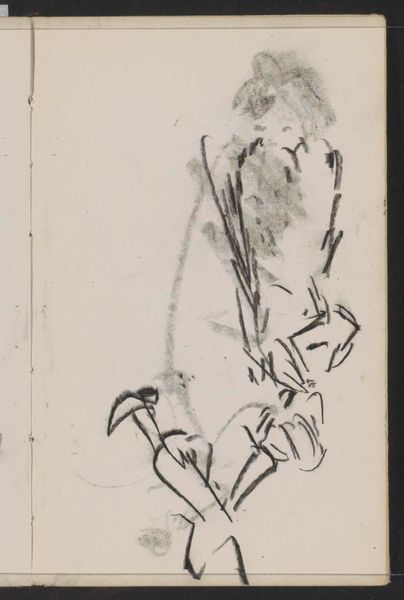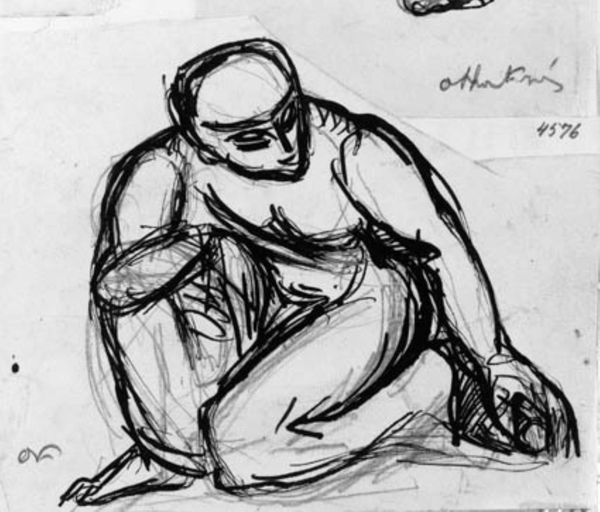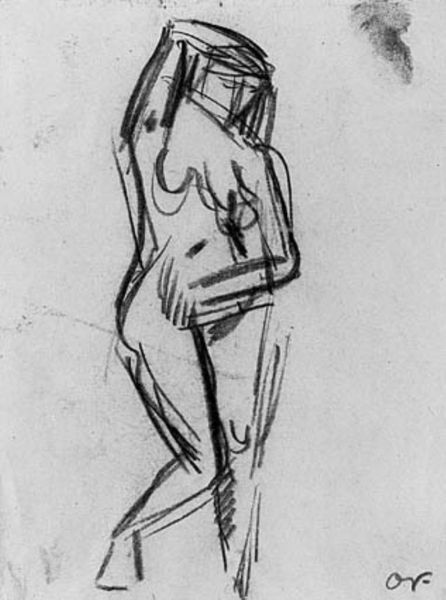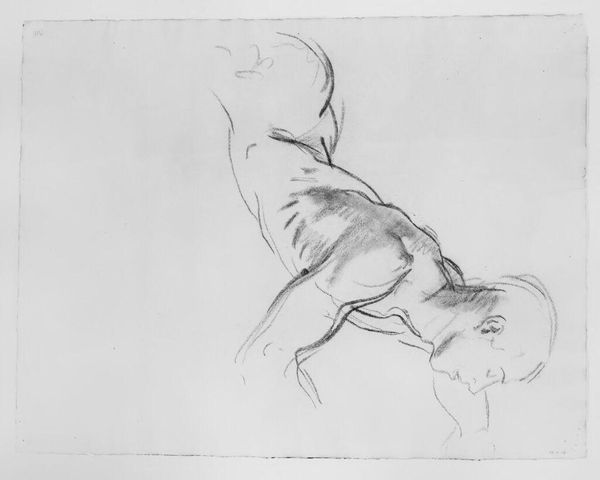
drawing, ink
#
drawing
#
figuration
#
ink
#
expressionism
#
monochrome
Dimensions: 257 mm (height) x 155 mm (width) (bladmaal)
Curator: This work is titled "Studie af mand, der river blade sammen," which translates to "Study of a man raking leaves," by Othon Friesz, created around 1907. It's currently housed at the SMK, the National Gallery of Denmark. It appears to be an ink drawing. What’s your initial response to it? Editor: It strikes me as possessing a raw, almost frantic energy. The bold lines create a sense of movement, as though the man is caught mid-action. The monochrome palette amplifies this urgency, doesn’t it? Curator: Absolutely. Friesz, although briefly aligned with the Fauves, was more anchored in Post-Impressionist traditions. Yet, there's an evident expressionistic impulse here. Consider the subject matter – not a grand historical event, but everyday labor. How might that have resonated with audiences at the time? Editor: In a rapidly industrializing Europe, depicting the common laborer acknowledged their role in society, certainly. There’s a visual tension too—the figure is monumentalized with these vigorous strokes, elevating his quotidian task. The lack of color forces us to concentrate on the form and the implied social narrative. Curator: Indeed. Also notice the compositional strategy—the unfinished figures in the background, like half-formed memories or premonitions. These suggest the cyclical, repetitive nature of labor, embedded in the larger human experience. The central figure, eternally caught raking leaves, speaks to the symbolic weight of routine. Editor: So, it is an image imbued with symbolism that taps into very fundamental human concerns like our relationship with work and also the social hierarchy as you mentioned before. It presents the cultural importance of everyday labor. Curator: Precisely, and considering Friesz's later embrace of more classical forms, this work offers a powerful insight into a transitional period, both artistically and socially. The image resonates through time, a monochrome echo of shared experience. Editor: Thank you. What an image! I will reflect further on this work’s position as a cultural document.
Comments
No comments
Be the first to comment and join the conversation on the ultimate creative platform.
